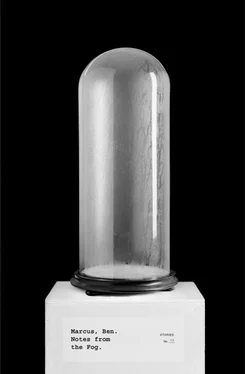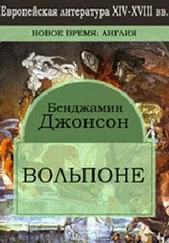The child was dead the next morning, his body small and cold. The specialist went home. In his lab he extracted water from the cream until it thickened into a salve. He booted the cream in a charger. He ran softeners along the underside to raw out the hardness. From his cabinet he selected finer ingredients, to support knowing, thinking, remembering. He used a cooling herb for a skin, then peeled it back leaving only a membrane. The water that he would add back to the salve, to cream it, could only be water extracted from the human being. Then the product passed through a purifier and, to be sure, the specialist tested it on himself, using the cream over his torso, documenting his own fevered speech, days of it, on the machine.
Over the years the specialist visited similar patients in the western states, in the heat-blackened towns. He worked the neighborhoods of Chicago. Children stricken with fever. Children too cold to think or move. Adults who’d gone quiet. He spread salve on the children from a metal tin and before they passed away the patients grew calm and sometimes spoke. Sometimes they wrote. Messages of demise, usually, predictions of peril. Medically induced prophecy. A prophecy cream is how it came to be understood. It was requested and dreaded. As they spoke the children postured at wellness, arranging their rooms just so, tidying their possessions. In flat, slow voices, they spelled out sorrow, pointing out the doomed persons in the room. Then they died.
The specialist explained to the families that he needed to study these cases in order to possibly save some other boy or girl, some man or woman whose lights had burned out. The specialist pressed the speeches onto filament, parsed them for meaning, and set the deathbed claims on a pinned grid. He compiled a truth map, finding it faulty. The auguries of the children obeyed a pattern outside reality, surpassing sense. People lived beyond their predicted dates, or perished sooner. The cream-induced prophecies were not accurate. The cream yielded mainly mistaken claims.
The specialist ceased his practice of applying cream to the ill. He desiccated the cream again, removing the human water. Then he spread the resulting salve on people who were well. He used it over and around his own body, on his clothes, in the rooms he visited. He tried and failed to atomize the salve into a mist. With volunteers at his lab, the specialist initiated a revised cream at their necks, in varying dosages, a cream debased by earth sugars. Then the specialist migrated across the body of the volunteer. He spread a weaker cream over one leg, the other, a hand, a fist. He had parents hold down their own children while he spread the cream on their backs. A cream was used inside clothing, slurried into cones through which the volunteers, in weak voices, commenced to sing.
Each application of each revised cream produced fits of speech. A literature ushered from the mouths of the volunteers. Prophetic, cream induced, forgotten later by the speakers, sometimes denounced. In content the language extractions were plain, banal, riddled with fear, without clear meaning. The specialist transcribed them all, logged them into English text, released them back into the world under different names, different titles. Documents from the salve. Provoked by cream.
Late in life the specialist gave up his practice. Many years after he died, the specialist’s daughter, now a young doctor herself, discovered samples of the darkened cream in his lab, maturing in a cabinet, a crust of sand along its surface, along with a notebook recording his results. She broke the cream down, ripped toxins from its core, added back salves. She kept the skeleton of the cream and built over it a new body. Her father’s patents for each medical bolus he produced were rogue, indicating a larger plan, to which the salve was only a small feature, a lubricant. Each portion of salve, released from its tin and rolled thin into ropes, was meant, according to a diagram she found, to join together, serving as a kind of circulatory system for a machine that did not exist yet, or for a machine, she later came to think, that was hiding in plain sight, a machine we could not see properly because we wore it. She could not picture what machine this salve would enable, what contraption it might grease, other than a human body, an animal body. She sensed a criminal component, a kind of weapon latent in the salve. At each site of fever, each home of a child who spoke ill and died, an unknown paste was found, sometimes inside the child’s body, predating any illness in the area. Implicating her father as the bringer of fever, only to test his prophecy cream. Her father would have seemed to be designing a weapon all along, using plant and chemical products together in a balm to bring a violence on the body. A body in fever will not keep its secret, was one of the notes she found. And other such claims. The specialist’s daughter found references to grave site applications. A cream rubbed on stone. On trees. A cream—this one an early iteration of her father’s product—spread over roads. Applied to the wheels of cars, which rolled through a territory. He called it, at times, a privacy cream. Batches of it were manufactured at Thompson, each tin numbered, the numbers etched free, indicating the properties of mind the cream would give or remove. Sometimes indicating nothing.
The rest is history, just not the kind that comforts. By the time of the specialist’s daughter’s death, creams of understanding were no longer new. Lotions smart and otherwise. Fortifying pastes across the torso, or in skins hovering at face level. Surrogate torsos made of lotion. A cosmetic fore-face that hung in liquid suspension in front of the real face, which turned as old and muddy as a coin. Bodies of cream worn like clothing. And so decorated. Foreign-language creams at the throat, to make speech plain. A cream at the back of the neck to release secrets. A salve for the mute and a salve for the tongue. A swishing lotion for inside the mouth, to protect the speaker from cream-induced prophecy. An unwitting release of secrets, compelled forth by perfect application, unbeknownst, of a cream. Applied in the woods. In the home. At work. Underground. On people, things, and space.
It was April 29and the streetlights were flickering in and out. And yet—little miracle—power was still on at Fowler’s house. Barely. He still had water. Heat. The clock on his stove was blinking, so at some point in the night he’d lost electricity. Briefly. His house might go dark again. It was out of his hands.
The flood had come on hard yesterday, the answer to a season of mountain rain. They’d seen it coming, and all the clay-faces had been crying about it on the news. Whimper whimper out of their omen holes. Everybody run for the hills. But you couldn’t force people from their homes. Yet. You could scare them to higher ground, another town, a school gymnasium outside the flood zone. You could conjure the odds of survival, showing the footage of past disasters, a child’s sock in a ditch, the imprint of a little person in the grass. Most people would scatter.
Most people. Excepting his truly. Fowler the Last. There would be no heirs. He’d waited out the evacuation because certain projects flourished in an empty neighborhood. Houses hollow. No people around to see. Most of what was really urgent to do necessitated a near-total absence of the living. Hell yes, he was relieved, but there was a sack of undesired emotion inside him. Instincts boiled up, even in idiots. His blood was on notice. His body could be scared and so what. Death to all feeling soon, right? RIP and whatever, because darkness forevermore. He wasn’t in charge of his feelings. It was kind of a relief. Just see where the secret engine pulled him, and don’t show your goddamn cards.
Читать дальше











